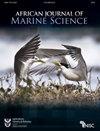海绵作为海洋环境中微量元素污染的简单生物监测工具:来自肯尼亚一项聚焦于叶根海绵的研究的见解
IF 1.4
4区 生物学
Q3 MARINE & FRESHWATER BIOLOGY
引用次数: 2
摘要
评价了海绵体叶海绵体作为微量元素污染的简单生物监测仪的潜力。测定了肯尼亚海岸四个不同人为影响地点沉积物和叶片磷中砷(As)、镉(Cd)、铬(Cr)、铜(Cu)、锰(Mn)和锌(Zn)的浓度。与污染最严重的Mkomani海滩的沉积物相比,除Mn外,叶栅藻中所有元素的浓度都较高,As和Cd在叶栅藻的浓度也高于所有地点的沉积物。在Mkomani海滩,除Mn外,所有元素的浓度比C P.foliacens/Csed在1.25至9.43之间,所有地点的As和Cd在1.26至13.30之间。结果表明,P.foliacens可能是一种合适的As和Cd生物监测器。建议进行进一步研究,以确定各种污染物元素的合适生物监测器,为肯尼亚沿海和海洋环境中管理微量元素污染的新的有效选择的政策决策提供信息。本文章由计算机程序翻译,如有差异,请以英文原文为准。
Sponges as simple biomonitoring tools for trace element pollution in marine environments: insights from a Kenyan study focused on the leaf sponge Phyllospongia foliascens
The potential of the marine leaf sponge Phyllospongia foliascens as a simple biomonitor of trace element pollution was assessed. The concentrations of arsenic (As), cadmium (Cd), chromium (Cr), copper (Cu), manganese (Mn) and zinc (Zn) in sediments and in P. foliascens from four sites of varying anthropogenic impacts along the Kenyan coast were determined. The concentrations of all elements, other than Mn, were higher in P. foliascens relative to the sediment at Mkomani Beach, the most polluted site, and the concentrations of As and Cd were higher in P. foliascens than in sediments at all sites. The concentration ratio C P. foliascens /Csed, representing the extent of accumulation of the elements in the sponge relative to the sediment, ranged between 1.25 and 9.43 for all the elements except for Mn at Mkomani Beach, and between 1.26 and 13.30 for As and Cd at all the sites. The results suggest that P. foliascens could be a suitable biomonitor of As and Cd. Further studies are recommended to identify suitable biomonitors of a variety of pollutant elements that could inform policy decisions geared towards novel and efficient options for managing trace element pollution in Kenya’s coastal and marine environment.
求助全文
通过发布文献求助,成功后即可免费获取论文全文。
去求助
来源期刊

African Journal of Marine Science
生物-海洋与淡水生物学
CiteScore
2.60
自引率
16.70%
发文量
17
审稿时长
6-12 weeks
期刊介绍:
The African (formerly South African) Journal of Marine Science provides an international forum for the publication of original scientific contributions or critical reviews, involving oceanic, shelf or estuarine waters, inclusive of oceanography, studies of organisms and their habitats, and aquaculture. Papers on the conservation and management of living resources, relevant social science and governance, or new techniques, are all welcomed, as are those that integrate different disciplines. Priority will be given to rigorous, question-driven research, rather than descriptive research. Contributions from African waters, including the Southern Ocean, are particularly encouraged, although not to the exclusion of those from elsewhere that have relevance to the African context. Submissions may take the form of a paper or a short communication. The journal aims to achieve a balanced representation of subject areas but also publishes proceedings of symposia in dedicated issues, as well as guest-edited suites on thematic topics in regular issues.
 求助内容:
求助内容: 应助结果提醒方式:
应助结果提醒方式:


